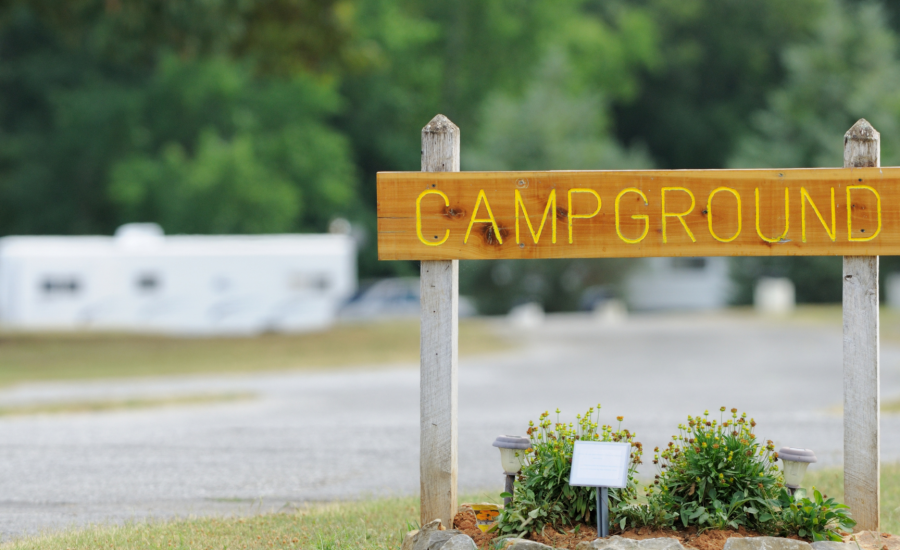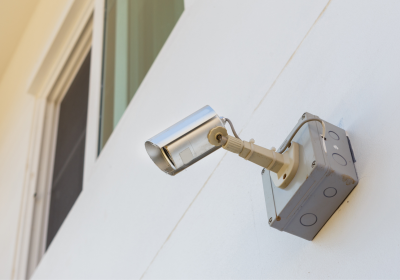If you spend a lot of time in RVs or at campgrounds, you might have to rely on campground WiFi to stay connected with loved ones and be updated with what’s going on in the world. If this is the case, you’ve likely noticed that campground WiFi is notoriously slow, if it even works in the first place.
Here are 6 reasons why campground WiFi is slow:
- You’re far away from an access point.
- The campground is crowded.
- Other campers are streaming video.
- The campground doesn’t prioritize fast WiFi.
- You’re surrounded by trees.
- You’re staying in an RV.
The rest of this article describes why campground WiFi is so slow and offers a few suggestions for increasing speed. Here’s to staying connected in the great outdoors!
1. You’re Far Away From an Access Point
This is most likely the issue if you’re staying in a larger campground. If the device you’re trying to reach WiFi on is out of reach from the closest access point, that will slow down the service and make it unstable.
If having WiFi access is important to you, one way to combat this issue is to choose a site close to an access point. Some campgrounds list on their maps where their access points are, so you can try to snag the one that’s as close as possible to one of these points. If, however, the campground map doesn’t have this information, booking a site that’s close to the main office is a pretty safe bet, as the office most likely has strong coverage.
You can also try contacting the campground and asking about the sites with the best WiFi access.
You can also try purchasing a USB WiFi adapter, like the Blue Shadow USB WiFi Adapter on Amazon.com. I like this adapter in particular because it is extremely fast, and it’s strong enough to stream HD video. This adapter also has a rotating antenna to move the antenna and improve signal and performance, which is essential for staying on campgrounds.
2. Other Campers Are Streaming Video
Streaming video takes up a lot of bandwidth, so if even just one or two other people are trying to stream video using WiFi, they can render it unusable for those around them. Most campgrounds prohibit streaming video for this reason, but some people choose to bypass these restrictions.
If this is the case, there’s not much you can do to fix the problem apart from asking those around you to stop streaming. You can try going to a local business to use their WiFi (if you’re unsure about where to go, almost all Starbucks, Panera, and McDonald’s locations have WiFi available) or using your mobile hotspot. However, if the campground is in the middle of nowhere, your mobile hotspot may not work too well either.
Another option is to get a WiFi booster, such as the 2022 WiFi Extender from Amazon.com. This booster enhances WiFi networks and eliminates dead zones in an area up to 3,000 square feet (278.70 square meter). Furthermore, it is compatible with any standard router.
3. The Campground Is Crowded
Campgrounds don’t have a lot of bandwidth, especially ones in more rural areas and national parks. The only internet service available to these campgrounds is a DSL-based connection or a T1 line, both of which provide only very limited bandwidth. Campgrounds in areas even more remote may have to use a satellite internet connection, which is even slower, even if just one person is trying to connect.
If the campground is crowded and many people are trying to use the WiFi at once, the service will be slow. There’s nothing you can do to improve this situation, and it’s just the reality of staying in a remote area. The technology simply cannot support the number of people trying to use it.
Your best bet in this situation is to use a booster, go to a business that provides WiFi, or use your mobile hotspot.
4. The Campground Doesn’t Prioritize Fast WiFi
Some campgrounds may be more understanding of digital nomads, RV residents, and others who need WiFI connectivity, but other campgrounds and their managers want to keep their space as an escape from the world of technology. If this is the case, they may not manage their bandwidth very well or avoid updating their old technology.
Using a booster could help, but if you are looking to stay in a place for an extended period and need WiFi, you might want to seek out another campground that has better connectivity or one that has a central area, like a clubhouse, where the WiFi is quick and reliable.
5. You’re Surrounded by Trees
You can’t be too upset about this reason. After all, you came to the campground to be surrounded by nature, right? Unfortunately, those beautiful trees that you’re surrounded by can obstruct the signal as it goes from the transmitter to your receiving device. You can try picking a site that has a clear line of sight to the access point, but then you’ll miss out on the feeling of being completely immersed in nature.
A WiFi adapter could help improve this situation, but if the forest is particularly dense, you may just be out of luck.
6. You’re Staying in an RV
If you’re camping in an RV, the campground’s poor WiFi is probably not the only reason it’s slow. RVs are made of metal, and metals, like aluminum and steel, are bad for long-range WiFi. Furthermore, the fiberglass, furniture, and kitchen appliances in your RV can also contribute to bad reception. Basically, RVs shield you from the outside elements (which is good, you want to be safe from rain and bears!), but they also shield you from WiFi signals.
You can remedy this situation by investing in a cell phone signal booster, so you can always rely on your mobile hotspot for the internet if the campground’s WiFi is slow. I like the HiBoost Cell Phone Signal Booster from Amazon.com. This booster is designed to improve data speed in even the most remote of areas and increase hotspot capability. There are two antennas, so you can adjust both to get maximum gain in the APP signal gauge.
Make Sure Your Connection is Strong
Don’t let your campground be known for its slow internet connection. Here at Groove Technology Services, we specialize in setting up reliable Wi-Fi services for RV parks and campgrounds in Utah, improving the overall experience of those using your camping services. Contact us today to get more information on what we can do for you!


